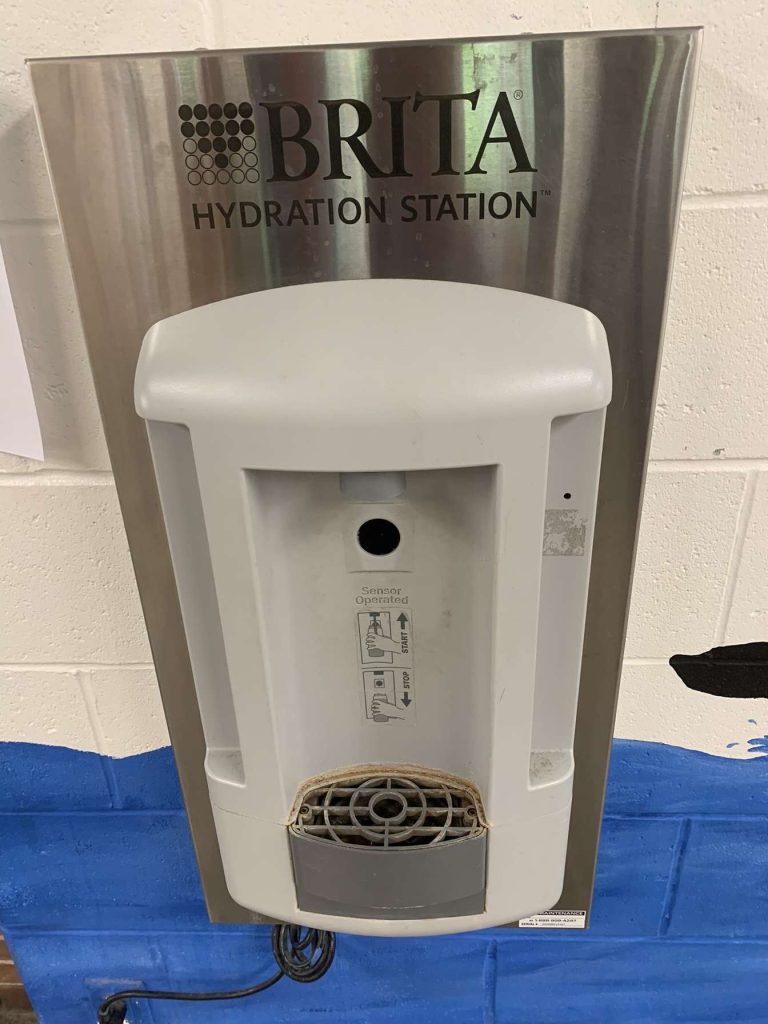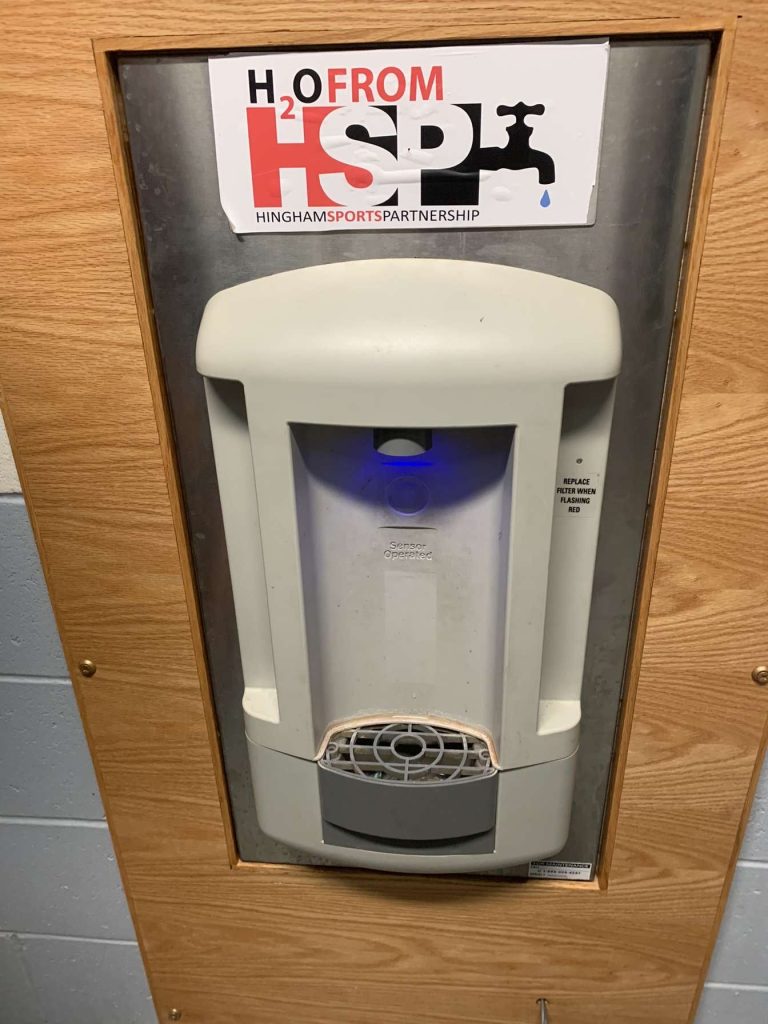
June 14, 2023 By Colin Mcnanara, Derek Dong, Alex Levy and Adam Healey, HHS Students
Recently our 10th-grade history classes have begun civics projects in an attempt to further engage ourselves in problem-solving in our community. Our group immediately thought of the one well-working water-filling station that sits outside our classroom. What is a short walk for us takes others several minutes to reach. Hingham Public Schools has ordered the stoppage of selling single-use plastic bottles, which should correlate to a rise in reusable water bottle usage next year. This leaves students’ only water source to be the four water-filling stations around the school. While this may seem like an abundance for students, one is located inside the locker rooms, making it inconvenient for students not in gym class to travel to, not to mention it is very slow when dispensing water.
Two others are located at the main entrance and just outside the cafeteria, and both prove to be rather challenging to use. Having to angle your water a certain way so the censor can pick it up makes filling your water a multi-minute situation, taking away class time and causing back-up during passing periods. Not to mention not a single water fountain at HHS currently works, so bringing a water bottle to hydrate yourself isn’t an option; it’s necessary. The water station located just outside of the 280’s bathrooms appears to be the only water-filling station that provides water fast enough for many students.
The problem is bad enough that we have seen lines of students be 8+ during passing periods. Students often make the journey past other filling stations to the one outside the 280s as it is the only one that is reliable enough to work all the time. We’re hopeful that the school will help its students by updating outdated water fillers. Being able to hydrate at HHS shouldn’t be a burden. Now our proposal: with some research, we found that the water filling stations cost between $2000-$3000 each. We understand that it is not a small amount of money, but it is crucial for students’ brains to be hydrated so they can function to their full potential, and the most effective way to do so is adding more water stations.

Investing in additional water-filling stations would not only improve the availability of clean drinking water for students but also help to reduce plastic waste and promote sustainability. While the cost of each water-filling station may seem high, it is a worthwhile investment in the health and well-being of students. In the long run, it may also save money that would otherwise be spent on purchasing bottled water.
In addition to adding more water-filling stations, it is also important to ensure that they are accessible and easy to use. Some of the existing water-filling stations are difficult to use, which can be frustrating and time-consuming for students. Ensuring that the stations are user-friendly and easily accessible can help to encourage more students to use them and reduce wait times.
Overall, investing in additional water-filling stations is a necessary step towards ensuring that students have access to clean drinking water and promoting sustainability. While the initial cost may be high, the long-term benefits of improved health, academic performance, and reduced waste make it a worthwhile investment for schools as it also will benefit our local environment.
Thank you,
Colin Mcnanara, Derek Dong, Alex Levy and Adam Healey


Bring back the watah bubblah!
I went to HHS in the 60’s long before plastic bottles. There were a number of water bubblers throughout the school. This issue did not exist. I guess “smart” people decided they weren’t needed when the plastic bottles appeared and then more “smart” people eliminated that option. Education is great isn’t it ?